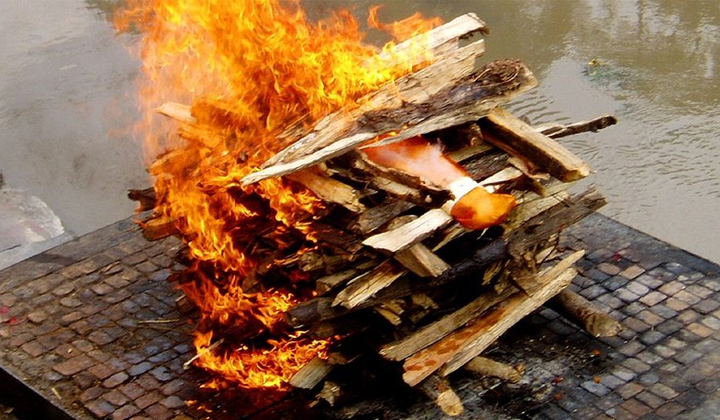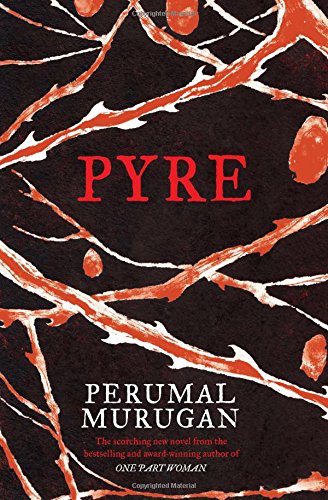Trending Now
- 830 voters names go missing in Kavundampalayam constituency
- If BJP comes to power we shall consider bringing back electoral bonds: Nirmala Sitaraman
- Monitoring at check posts between Kerala and TN intensified as bird flu gets virulent in Kerala
Columns
How to take on an entrenched, regressive social order, one novel at a time
![]() July 31, 2016
July 31, 2016
Perumal Murugan’s ‘Pyre’: continuing our series on books that our readers are moved by.
Veena Muthuraman
“I saw the best minds of my generation destroyed by madness, starving hysterical naked, dragging themselves through the negro streets at dawn looking for an angry fix..”
-From “Howl” by Allan Ginsberg, the original poem with “redeeming social importance”
Perumal Murugan needs no introduction. Crucified by a mob and resurrected by the court, he is an unlikely and unintentional poster boy for literary freedom, that much-maligned commodity of our time. There is no resurrection or respite of any kind, however, in Murugan’s Pyre (Pookuzhi in Tamil, translated to English by Aniruddhan Vasudevan), written after and in response to the real-life story of the violent death of Ilavarasan, one half of a young couple brave enough to attempt to live together despite being from different castes.
In Pyre, Murugan takes the reader once again deep inside the Kongu villages in Western Tamil Nadu where over all else, the bond of community and caste holds sway. The narrative begins with a cinematic moment redolent of many a Tamil movie:
The sun was blazing overhead when Saroja and Kumaresan stepped off the bus. Beyond the tamarind trees that lined the road, all they could see were vast expanses of arid land. There were no houses anywhere in sight. With each searing gust of wind, the white summer heat spread over everything as if white saris had been flung across the sky. There was not a soul on the road. Even the birds were silent. Just an ashen dryness, singed by the heat, hung in the air. Saroja hesitated to venture into that inhospitable space.
“Step down with your right foot first,” Kumaresan had said to her.
Lyrical and haunting
Kumaresan, the only son of Marayi, a widow, returns to his native Kattuppatti with a wife. He had been sent to Tholur, a small town, with a Bhai to work at a soda bottling shop but there, he falls in love with Saroja, a girl from a different caste. They elope and get married in a temple after which Kumaresan brings her home hoping to be scolded for a couple of days and then accepted. The village thinks otherwise, as they are convinced that fair-skinned Saroja is from a different caste.
Kumaresan, ever optimistic, busies himself with setting up a soda bottle business in a nearby market town despite the unrelenting hatred meted out to him and his wife from everyone around him. His new bride grows fearful with every passing hour as the story builds up to its inevitable crescendo.
Murugan’s writing is lyrical, evocative and haunting and in many ways, the author is a true heir to the classical Tamil poetic tradition which is known for being exactly that. The Kongu country comes to life in Murugan’s beautifully crafted sentences, and his cutting metaphors are razor-sharp. The conversations are a pleasure to read and Marayi’s monologues are well, to kill for.
For instance, here is Saroja walking on bare rock for the first time:
She had never set her bare feet on a rock before. It touched her with the combined sensation of Kumaresan’s soft hands and his rough embrace, the memory of which made her shiver with pleasure every time she walked on the rock’s surface. But she had to be cautious. Even a slight tumble and her toenails might get wrenched out, or she might fall feet first. Eventually, she got used to walking barefoot on the rock. Like a child learning to walk, she carefully placed one foot in front of another.
And here is Marayi, on one of her many dirges:
“I have one son only – one son to continue my family line. After destroying his life and burying him alive, here she stands on top of his grave, lush like the erukku shrub. I cannot bear to look at this plant! Oh God! How can I uproot it?”
If I do have a quibble with the language in the book, it has to do with translation. Vasudevan has mostly done a wonderful job of translating a challenging book with a profusion of distinct regional dialects. But at times, phrases that make perfect sense in Tamil may feel plain weird to someone not familiar with the language, and a literal translation may not entirely be appropriate in this case. What is such a reader to make of endearments such as “my little calf” or phrases such as “she had walked out in just the sari she was wearing”?
Not quite real
As to the story of which he writes so beautifully about: I read Pyre a week ago in a village about 300 kilometres east of Kongu country, in a place not dissimilar from Murugan’s Kattuppatti except perhaps one that is a little less caste conscious. I read the story lounging against a pillar in a courtyard while my mother sat at the far end listening to recent village gossip and of the latest transgressions of its denizens. The village landscape in front of me and the effort involved in living here was effortlessly etched out in Murugan’s account and yet, for all the poetic descriptions, there is something about the story, and the people in it that did not ring entirely true.
This has partly to do with time – Pyre is set in 1980 (no, it is not evident. It took half the book for me to recognise the movie reference and look it up) where this world of ours was different: no mobile phones or TVs, no fast transport connectivity and more important, the language and tools used to perpetuate caste differences were less sophisticated.
But that the story is set in a different time does not explain the one-dimensionality of its protagonists or the obviously (deliberate?) wrong notes in the story. Kumaresan comes across as either a dunce or worse, one of the ever smiling zombies brainwashed by a new age guru – there can be no other explanation for his optimism and his decision to stay on in the village despite being threatened, ostracised and excommunicated.
Saroja, even though she may be of a different caste, is not necessarily undesirable unless she is of the wrong caste, and this is an important distinction. That her brother and father work in a leather factory could be dead giveaways that she is a Dalit but the villagers do not know that until the very end – what they do know is that she is fair-skinned and that is usually associated with one of the right castes, and hence does not explain their hatred.
Murugan also contrasts the strict caste mores of the village with a more relaxed atmosphere of the smaller towns that surround it which is misleading – this isn’t true today where a substantial proportion of the violence resulting from caste warfare happens in urban settings, and this wasn’t true in 1980.
The films came before
These are minor quibbles in what is an intense and searing account of an age-old social order but they do matter in fiction, especially if it is intended to be socially relevant fiction. It was when I re-read Marayi’s dirges that I realised what Pyre reminded me of. Long before (popular) fiction, Tamil films have been playing with portraying with rural settings and caste conflicts.
In the 1980s, director Bharathiraja made a slew of blockbuster movies known for their realistic portrayal of village life, progressive messages, and sensitivity in relationships. The films boasted of some very excellent acting (e.g., Kamalhassan in a career-defining role in 16 Vayadhinile, Sivaji Ganesan in an unbelievably subdued role in Mudhal Mariyadhai), hauntingly beautiful music by Ilayaraja set to Vairamuthu’s poetic lyrics, and real-life parched landscapes of Tamil country.
And yet, for all its beauty, the storylines tended to be simplistic with good versus evil tropes, the characters one-dimensional and over the top, and not much in way of humour. Perumal Murugan’s Pyre is of the same school and would make an excellent movie in the same mould but I can’t help thinking that the underlying story requires a bit more nuance to work in fiction.
Read an excerpt from the novel.
Veena Muthuraman’s short story collection, A Place of No Importance, has been published by Juggernaut Books. She lives in Edinburgh and is working on her first novel.
Disclaimer: The views expressed above are the author’s own























